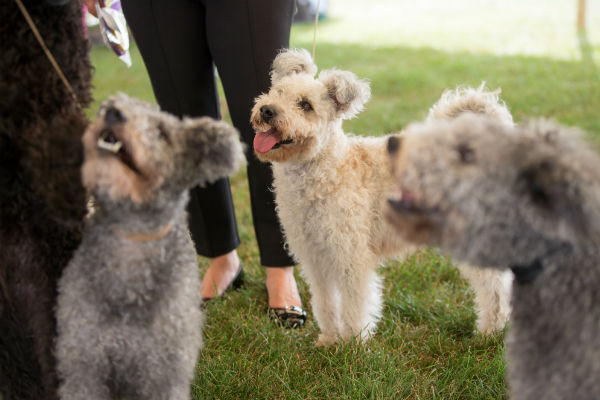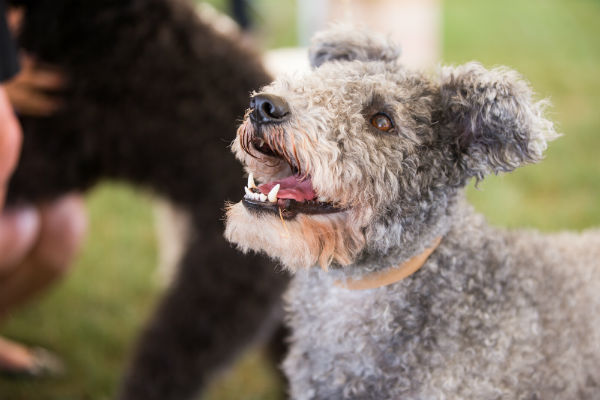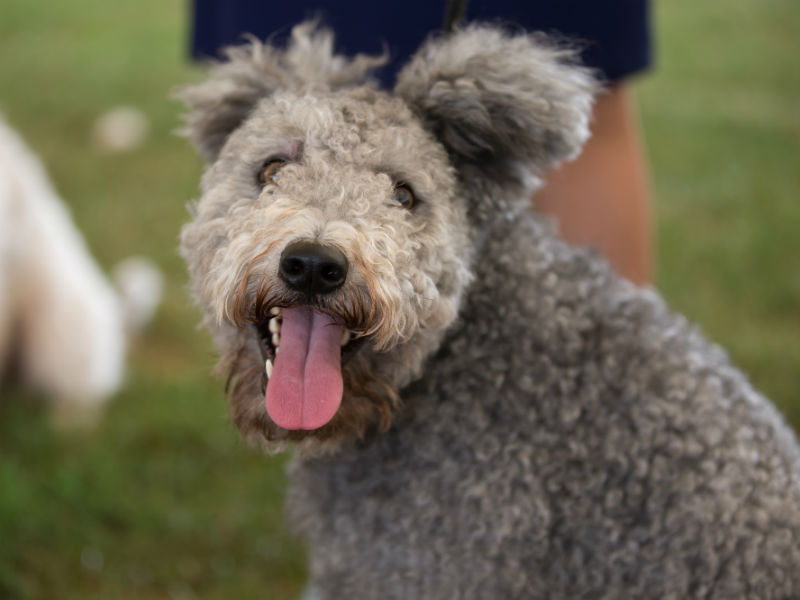The Pumi is the latest breed to be recognized by the American Kennel Club (AKC), receiving full AKC status as a member of the Herding Group on July 1, 2016. This rare breed, with only a few new litters born in the United States each year, may be the new dog on the block, but the Pumi has a long history.
The Pumi originated in Hungary and its history is intertwined with another ancestral Hungarian herding breed, the Puli. Approximately 300 years ago, the Puli came across French and German herding dogs during the trading of livestock between Hungary, France, and Germany. Either accidentally or on purpose, mating between these different types of dogs led to the first litter of Pumik (the plural for Pumi).

Today’s Pumi is a result of centuries of selective breeding by shepherds to develop a dog appropriate for local conditions. The dogs needed to be able to move animals through the unique environment of the area where pastures were small and only accessible through woods or along narrow roads. They also needed to be able to work the semi-wild livestock, such as the Hungarian Grey cattle. That required a dog that was quick and decisive, could work close to the livestock, and could function independently, all traits seen in the present day Pumi. Pumik can still be found herding on farms in Hungary today.
The Pumi is a medium-sized dog with a square outline. Males should stand 16-18 inches high to the top of the shoulder with an ideal weight of 27-29 pounds, and females should be 15-17 1/2 inches high and 22-24 pounds. The whimsical expression on a Pumi’s face is enhanced by his semi-erect ears and his tail, which is carried in a circle over his back.
Pumik have gorgeous coats that are a blend of wavy and curly hair shaped into curls or corkscrews all over the body. There is an equal mix of softer undercoat and harsh hair in the coat, and unlike the Puli, the coat is never corded. The breed standard lists several acceptable colors including white, black, any shade of gray, and shades of fawn ranging from red to pale cream.

Pumik don’t shed, but they need regular brushing and combing once every 2 weeks to remove mats and prevent mats from forming. Owners should also make sure to comb out any material that their Pumi's coat may have picked up, such as twigs. The hair should be left to dry naturally, not blown dry, to be sure the coat forms its characteristic corkscrews and curls. After a brushing session, the Pumi can be wet down and allowed to air dry to restore the proper shape to the curls.
Pumik are lively and energetic, and possess the high intelligence of other herding breeds. They also share the terrier’s alertness and love of life. This adds up to a dog that needs to work every day. That could be actually herding cattle or simply fetching a tennis ball. Consider activities that include daily training to stimulate your Pumi’s brain. These dogs have a seemingly unlimited willingness to work, which makes them fabulous partners for dog sports, such as herding, flyball, or obedience.

A Pumi’s herding heritage means he will consider his family his flock. He will bond to them strongly and center his behavior around them. He will also expect to be involved in everything his humans do and will want to be in the middle of the action. An energetic family that wants to include their dog in their activities would be a great fit for a Pumi.


